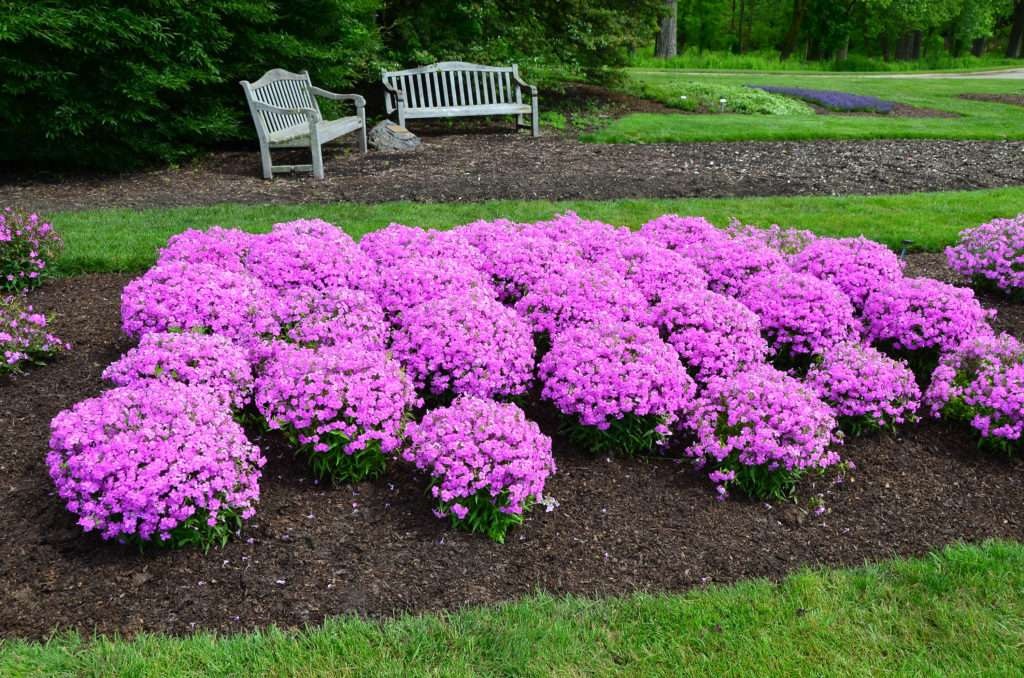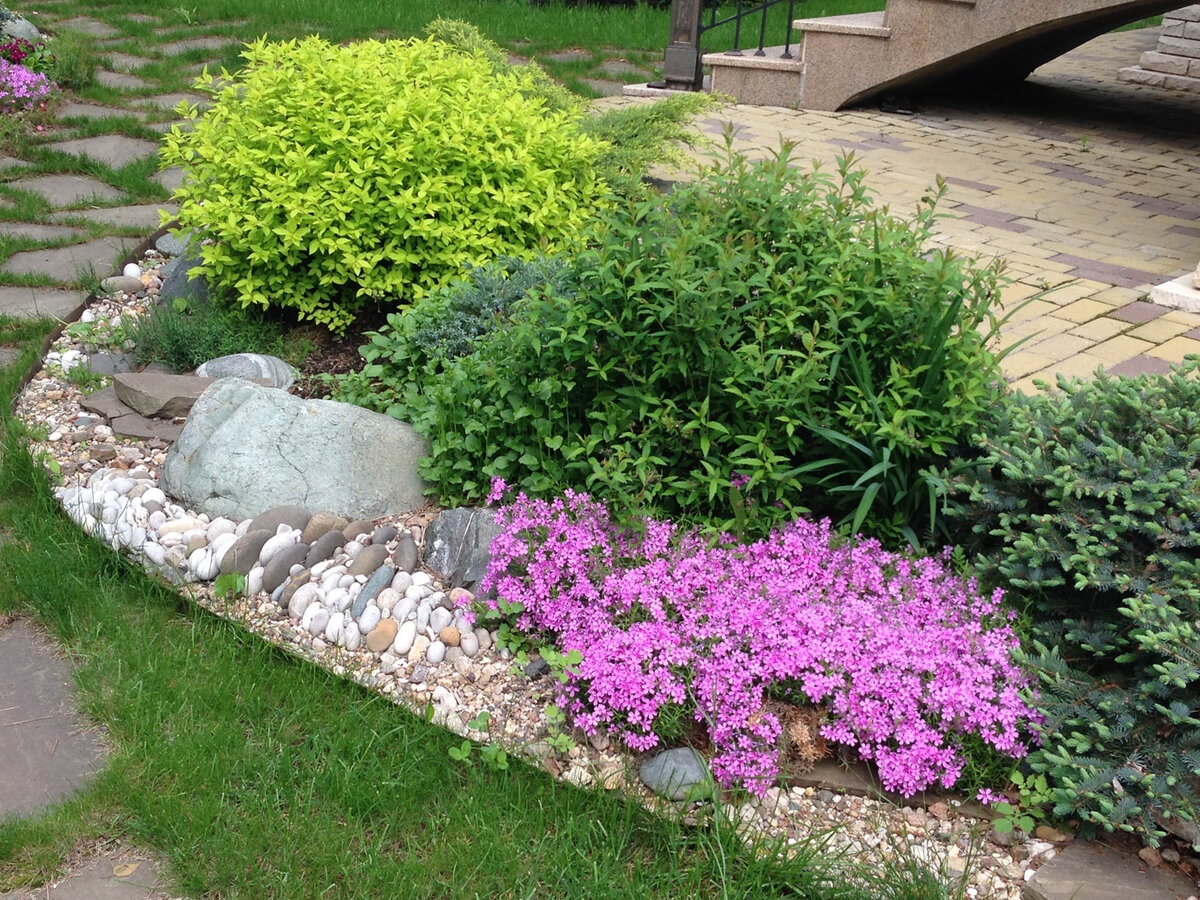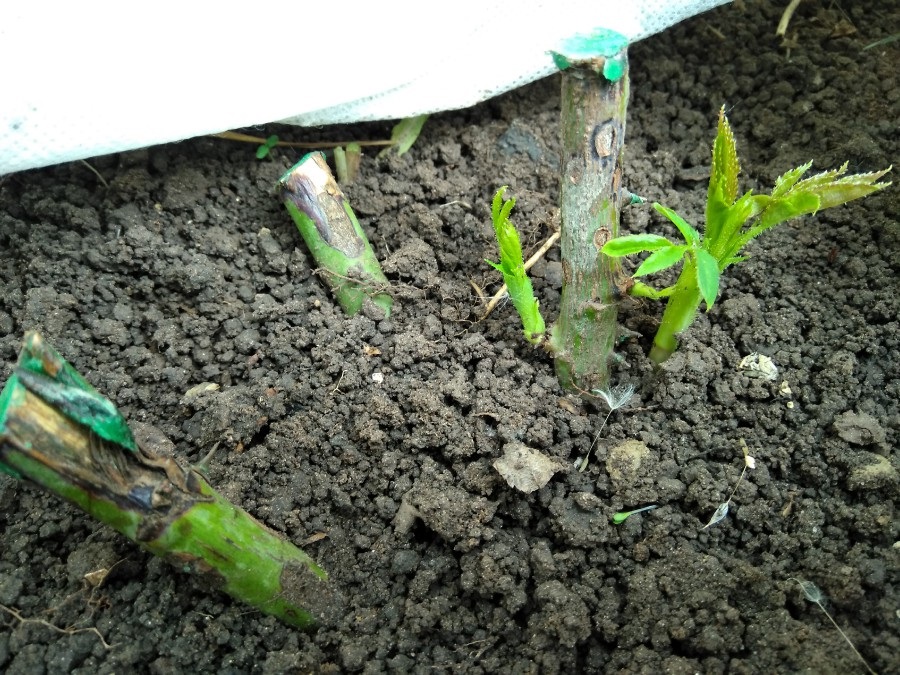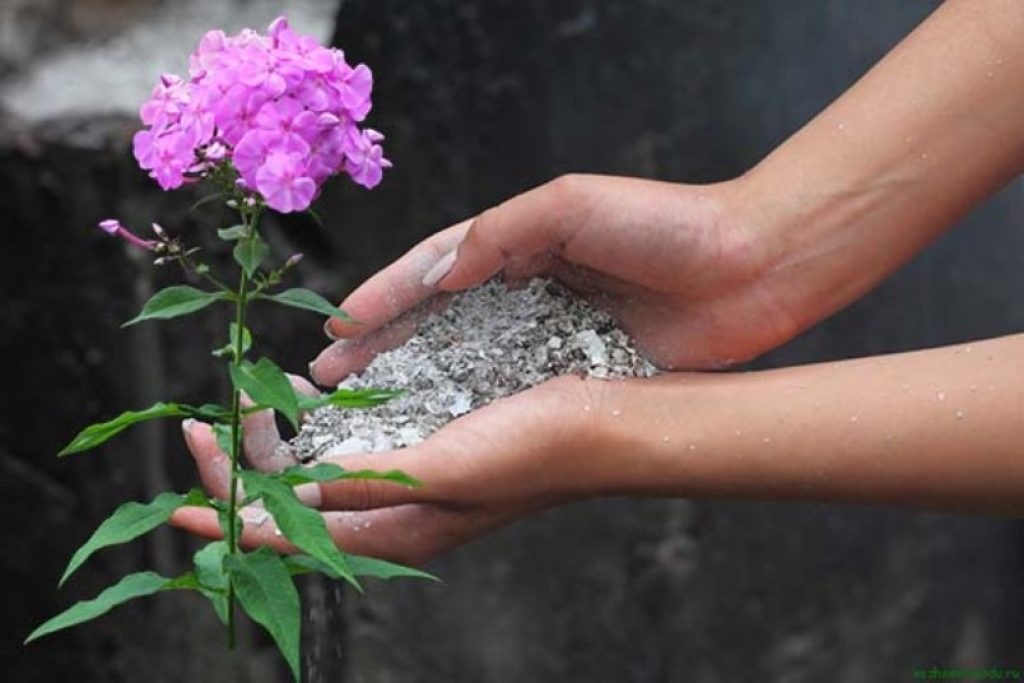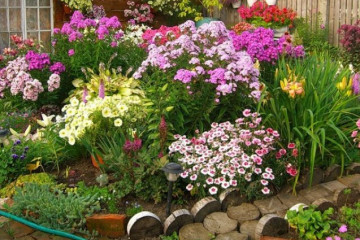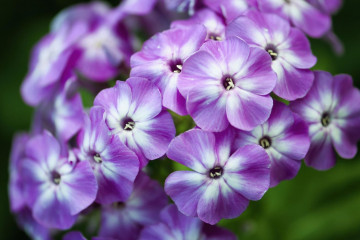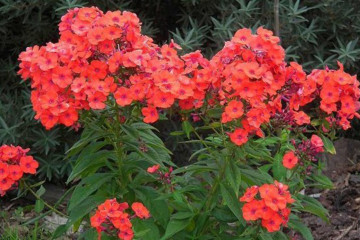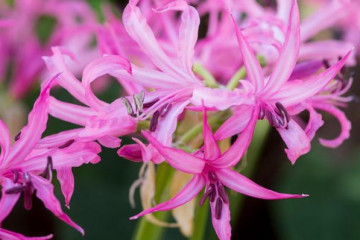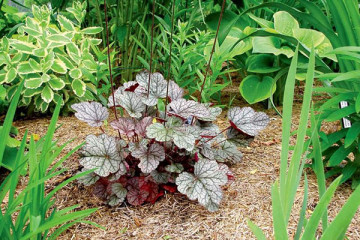Perennial phlox care and planting
Content:
- Variety of species, varieties and hybrids
- How to plant perennial phlox tubers
- The combination of phlox in a flower bed with other plants
- Phlox: the secrets of successful garden growing
- What is the lifespan of a plant
- Vegetative and seed reproduction of phlox
- What is the best time to plant phlox
- Features of growing phlox in the open field
- Choosing a place and soil for planting
- Perennial phlox care in summer
- Flower care in winter
- Why doesn't the flower bloom
- Phlox pest and disease control
Phlox are ornamental plants that can give a flower garden a unique beauty. Phlox care is easy. Plants are picky, they get along well next to other flowers, which makes it possible to create unique compositions.
Variety of species, varieties and hybrids
In total, there are more than 60 species of this flower. According to the structure of the stem, they are classified as follows:
- creeping;
- ascending;
- upright.
The choice of type depends on the location on the site. If that's enough, you can opt for creeping varieties to create a gorgeous flower carpet.
Growing and caring for phlox does not cause much trouble. The plant perfectly adapts to the surrounding conditions. There are four groups in total:
- Tall bush - can reach a height of 170 cm, flowering begins in summer and lasts until autumn.
- Medium-sized bushy flowers will delight you with flowers in early spring, the plant grows up to 70 cm.
- The undersized species is subdivided into bush and creeping. Its bloom is observed in the second half of spring or the very beginning of summer.
- Creeping phloxes rise no higher than 15 cm from the ground. They begin to bloom early in the spring.
How to plant perennial phlox tubers
Phlox is planted in autumn and spring. The autumn procedure is in August. The plant must first have buds. Those flowers that have already completed their flowering will be ready for transplantation. Late species are planted in September.
Flowering will appear on plants only next season. For spring planting, late species are suitable, which are obtained in the autumn and placed in a warm room for the winter. For the middle lane, the time for events comes in late April-early May. It is necessary that the ground be moist and cool.
The spring landing has its pros and cons. During this period, even the smallest roots can take root well, if the necessary watering is provided. But spring plants take longer to get sick than those planted in autumn.
The plant takes root well in any soil. It is not recommended to make very deep grooves for seating. You need such a hole to just place the roots there. The bulk of the rhizomes should be at a depth of no more than 30 cm.
Phlox care involves good plant nutrition. It is very fond of complementary food. Before digging, potash and phosphorus fertilizing is added to the ground. If the soil is very clayey, you will need to mix it with sand.
Digging the site must be done several times.This is necessary in order to mix all the fertilizers.
The combination of phlox in a flower bed with other plants
By planting this plant on your site, you can grow a magnificent garden. Flowers go well in flower beds with peonies, lupines, oriental poppies, campanula.
If flowers are planted in a stone garden, they will perfectly coexist with snowdrops, crocuses.
Phlox: the secrets of successful garden growing
Experienced gardeners have three rules on how to care for phlox in the country in order to get a gorgeous garden. A good result can be achieved if the following conditions are met:
- Choose a soil for planting fertile and loose.
- Plant in a convenient location where you can easily water and cultivate the soil.
- Place the plant in places where there is sufficient sunlight.
Perennial flowers attract with bright and varied colors. Experienced gardeners place phlox in partial shade, near shrubs. They will provide flowers with protection from the strong sun on hot days.
The plant will bloom best on an alpine slide. It loves the slopes. The flower beds should be located on the west or east side of the house.
What is the lifespan of a plant
Phlox are one of the few plants that allow you to create blooming compositions in the garden from early spring to late autumn. You can pick up varieties with different periods and duration of flowering.
Depending on the period, phloxes are divided into the following:
- early, flowers appear from May to mid-July;
- the middle ones bloom from mid-June to August;
- the late ones delight with inflorescences until the first frost.
With proper care, some varieties bloom several times a year.
Vegetative and seed reproduction of phlox
Perennial varieties can be grown using seeds and vegetatively.
Seed propagation
Planting by seeds is only suitable for annual varieties of phlox. The seeds are laid out on top of the ground and covered with foil. It is important to provide good lighting at this moment. Peat tablets can be used to germinate the seed.
Sprouts can be transplanted in May. Leave 15-20 cm between the seedlings.This space will be enough to ensure the formation of a lush inflorescence.
Division of bushes
A perennial can multiply by root division. The procedure is carried out both in spring and autumn. If the transplant is carried out in the spring, then fertilizer is laid in the prepared hole in advance.
Rhizomes divide in plants that are at least three years old. They are carefully dug out, the stems are cut at a distance of 10 cm and the root is cut into pieces. During planting, the soil in the prepared hole must be moist. Roots are placed in it, then they are covered with earth on top.
Stem cuttings
Among gardeners, one of the most common ways to plant phlox is using shoots. Cuttings are broken out at the base of the stem. In order for them to get stronger, they are first planted in a greenhouse. In the open field, they take root very slowly.
What is the best time to plant phlox
Planting on a flower bed can be done in spring, summer and autumn. The longest period is autumn. All work is given up to 35 days. The division begins in August, and the disembarkation ends at the end of September.
Phlox varieties that bloom late begin to be planted in the second half of September. But it is best to postpone work in such a situation in the spring.
Planting a plant in the spring is possible only after the complete disappearance of the snow cover. The earth must have time to dry out.
Features of growing phlox in the open field
Before planting phlox, you need to take into account the peculiarities of the plant roots. The root system should be located on the top layer of the earth. She does not tolerate being around strong plants such as trees and bushes. It is also important to avoid stagnant water on the topsoil.
Seedlings in open ground are planted in pre-dug holes.
Before planting seedlings in the hole, the hole is filled with water. Then you need to wait for it to be absorbed into the ground. The seedling is deepened by 2.5 cm. The plant takes root on the 14th day. A distance of 35 cm must be left between each seedling.
Choosing a place and soil for planting
The correct knowledge of how to plant phlox will help you enjoy magnificent inflorescences for a long time. First of all, you need to decide on the landing site. It is important to consider what kind of soil phlox like. There are several rules:
- The flower bed should be in a place protected from the wind.
- There should be shade on the site during the sunniest hours. The sun will shorten the flowering time.
Land for planting is prepared in advance. If you do everything right in the fall, then there will be no problems with how to care for phloxes in the future.
The plant has shallow roots. To make them feel comfortable, it is enough to take a glass of ash mixed with two buckets of humus and mineral fertilizers per 1 square meter into the ground from top dressing in the fall during digging.
Phlox, planting and caring for them, suggest an attentive attitude to the irrigation regime, the place of planting seedlings, and fertilization. Both the duration of flowering and the health of the plant depend on this.
Flower feeding
Feeding phlox is one of the most important aspects of grooming. Since the flower has been in one place for many years, it is necessary to fertilize the soil. The timing of fertilization is as follows:
- The first feeding is done from May 10 to May 15 with a liquid mullein. Necessary at the rate of 1 liter per 15 square meters.
- The second fertilization should be done in early June. To do this, use chicken droppings, mullein with the addition of half a tablespoon of sulfate and 15 g of potassium salt.
- In early July, the soil is fertilized for the third time.
Further feeding is carried out depending on how quickly phlox grows. Late varieties can be fertilized in early August. It is important to exclude nitrogen, only 20 g of potassium salt and half a tablespoon of phosphorus are introduced into the soil.
Weeding and loosening the soil
Loosening of the soil must be done after watering. But it should be shallow, since the root system is shallow.
Pruning methods
Flowers need preparation before winter begins. Perennial plants need pruning. The procedure is carried out in the fall after the end of flowering, but no later than the end of October, until frost has come.
Watering plants
The soil around the plant should not be allowed to dry out.The soil must be moist throughout the growing season. Knowing how often to water phlox, you will be able to achieve persistent flowering.
The roots of the plant are located close to the surface of the earth. Therefore, proper watering is very important for its condition. During the appearance of buds, flowers require an increased amount of moisture.
If a flower lacks water, its stems become thin, inflorescences are poorly formed. One square meter of soil requires two liters of water.
Mulching after pruning and preparing for winter
Mulching is used to maintain moisture in the soil on hot days. Straw, hay, peat, or humus will do. Particular attention is paid to flowers with large roots. Mulching should also be done before winter to preserve the root.
Perennial phlox care in summer
Bushes need special care during the summer. They need to be watered twice a day: in the morning and in the evening. After they get stronger, you need to pinch them over the fourth pair of leaves.
It is important during the period when phlox bloom to rid the plant of wilted inflorescences. During growth, additional feeding is necessary for proper seed formation to occur.
Flower care in winter
Preparing a plant for wintering consists in feeding and sheltering from the cold. Dried stems are cut off, the roots are covered with mulch.
Shelter for the winter
Phloxes belong to frost-resistant crops, but in regions with a harsh climate, they must be insulated for the winter. Often the plant freezes completely not in winter, when it is covered with snow, but in spring when the snow cover melts, but the night temperature can drop to minus 15 degrees.
To insulate the bush, the roots from above are mulched with peat, compost, then covered with spruce branches.
Why doesn't the flower bloom
There are many reasons why phlox may not bloom:
- The plant is in the shade and does not receive enough sunlight.
- The soil is poorly fertilized.
- The grower does not regularly mulch.
- The root system is highly moistened or, on the contrary, lacks moisture.
The lack of inflorescences can be triggered by an excess of nitrogen. In such a situation, the leaves will grow more actively, taking away all the nutrients from the flowers. You can fix the problem if you fertilize the bush in the fall using a large amount of phosphorus and potassium.
Phlox pest and disease control
A perennial flower is very rarely sick. The main problem that gardeners can face is rust. It appears if the bush is constantly in the shade.
The flower may be affected by stem dumbness. This is a dangerous disease that quickly spreads to other plants. Signs of its manifestation are the twisting of the leaves on the flowers and the yellowness of the top. In order to prevent the spread of pathology to the entire garden, you need to immediately remove the damaged parts, then treat the flower with special preparations purchased in the store.
Knowing the simple rules will help you create a unique flower garden in the garden.


